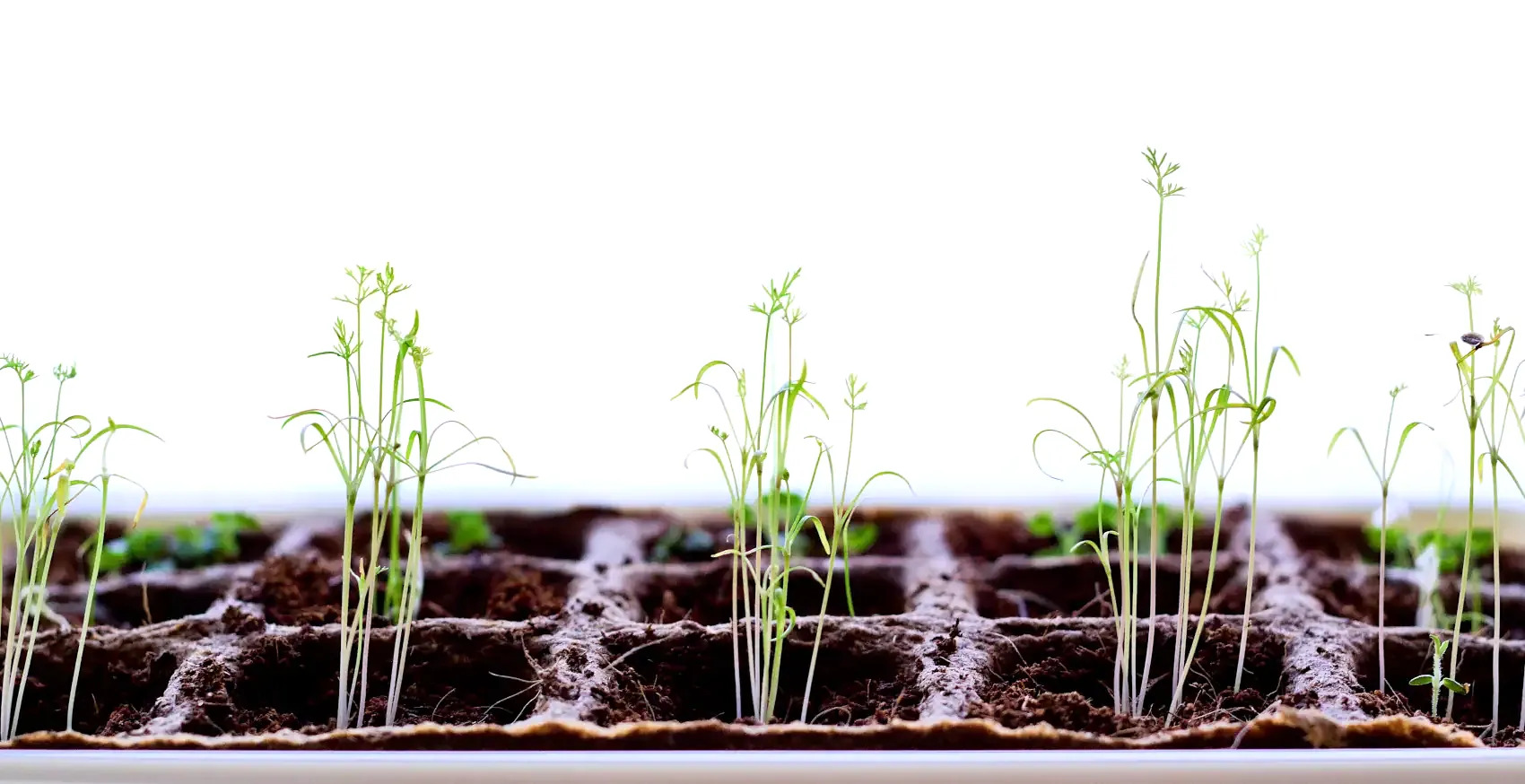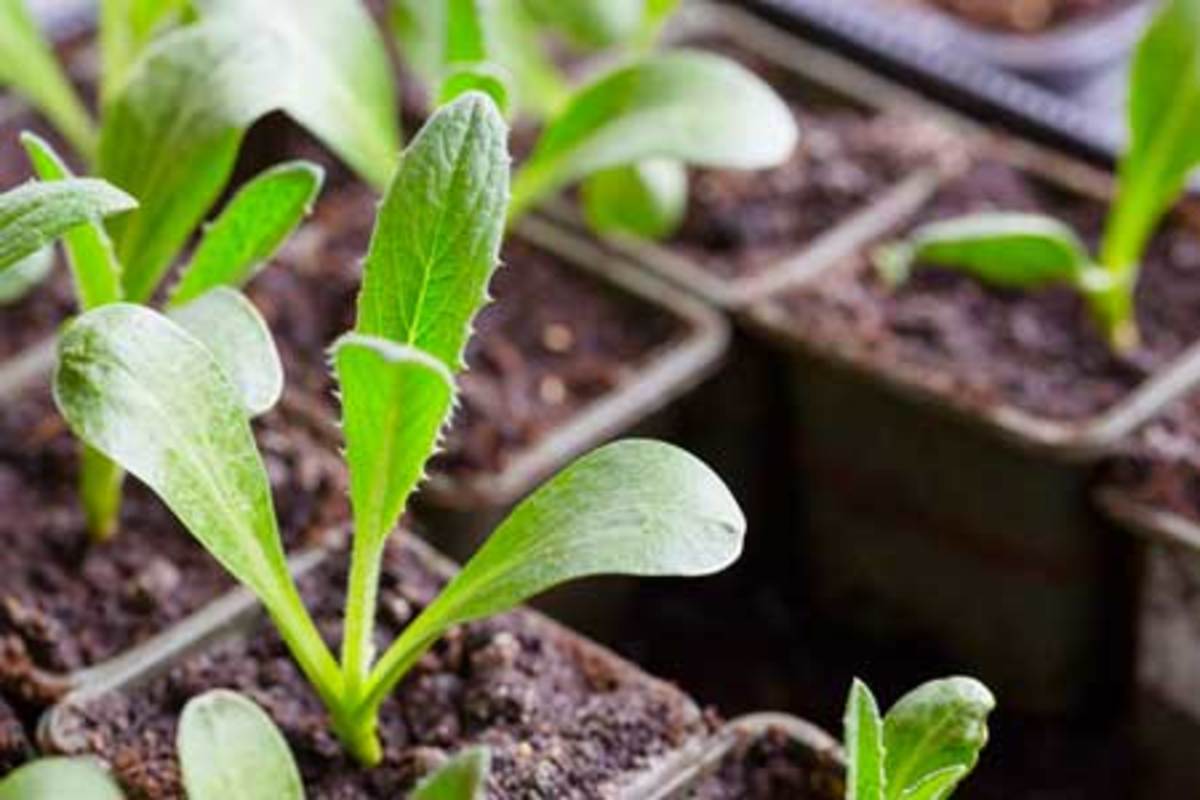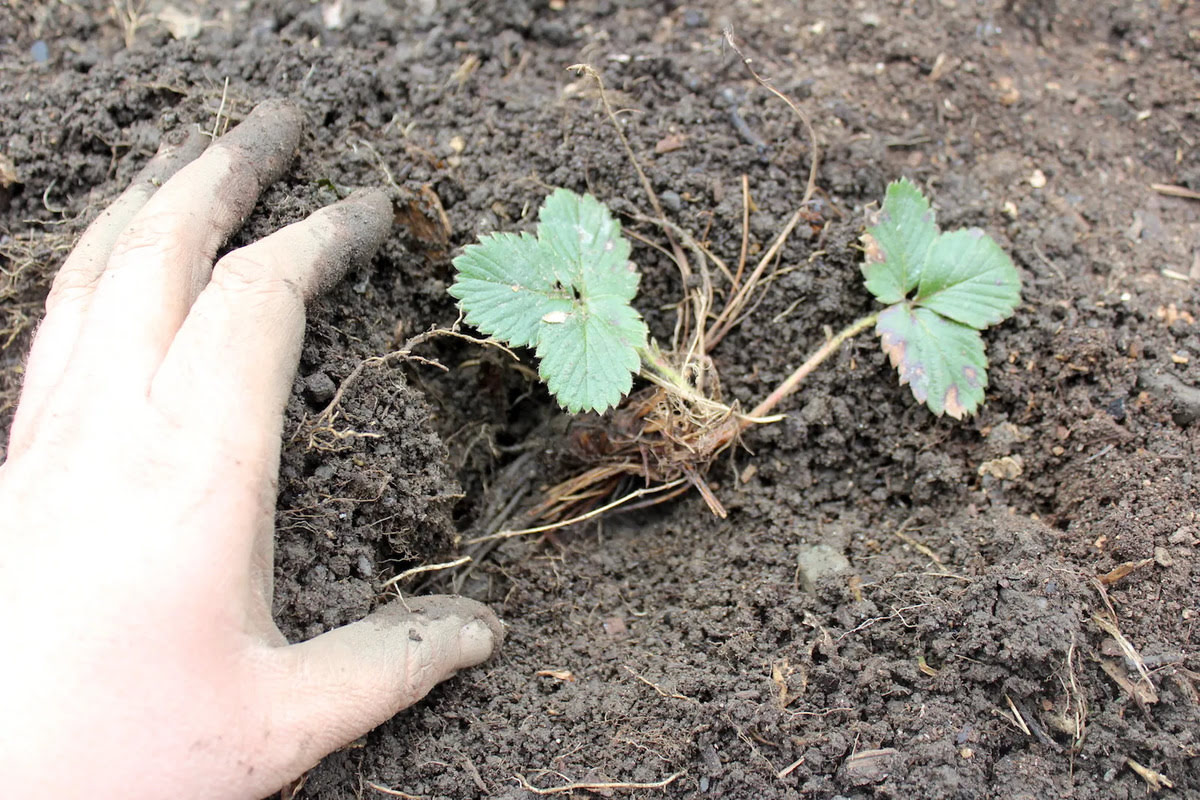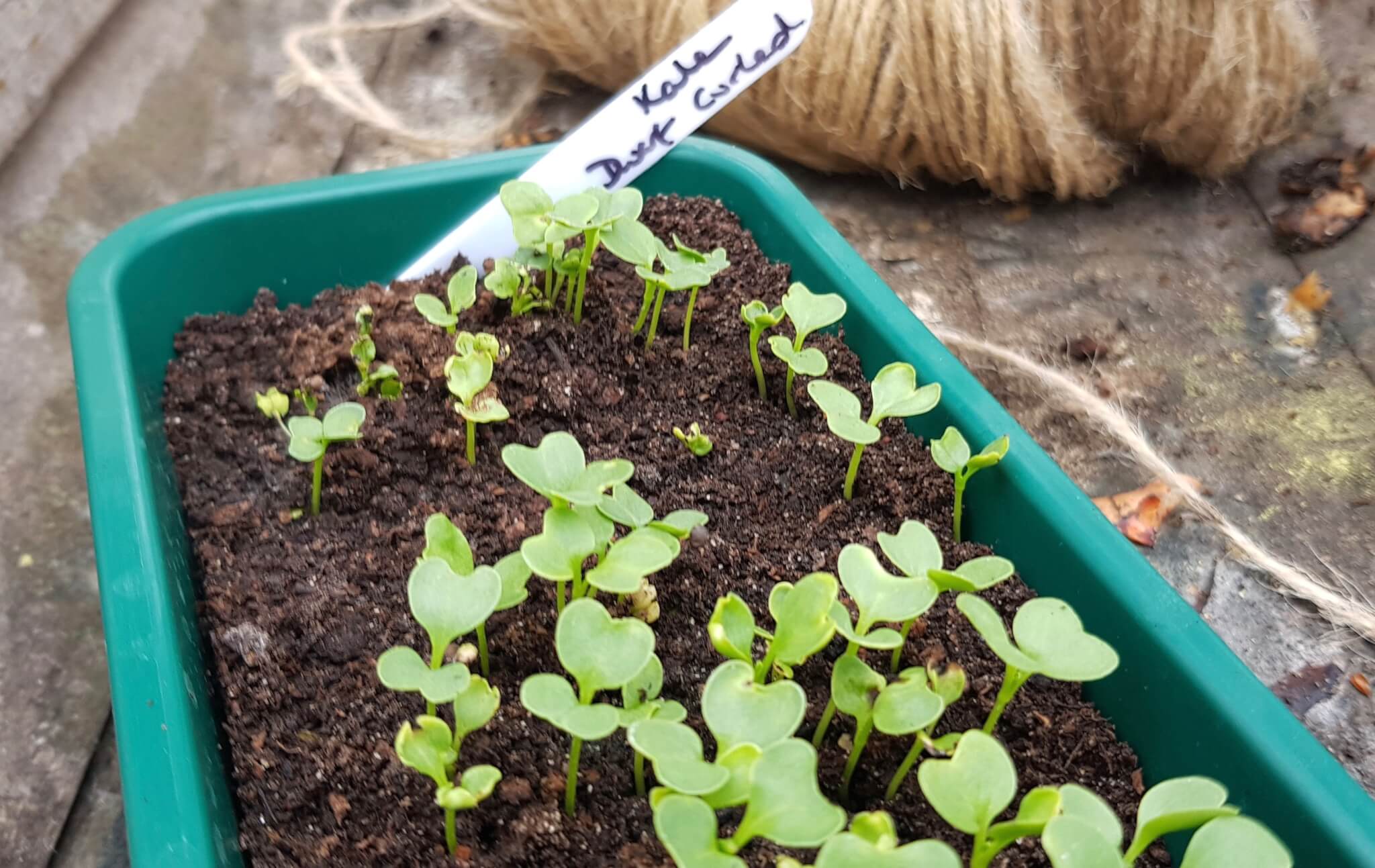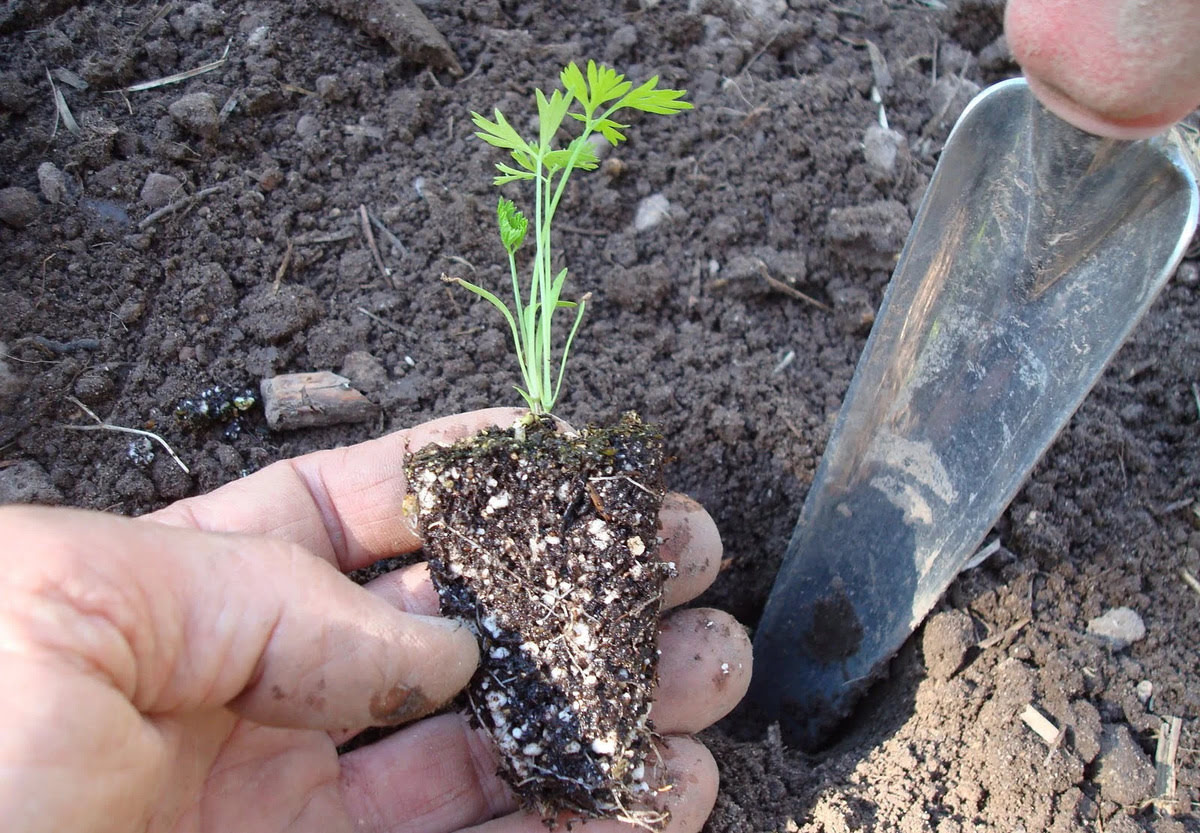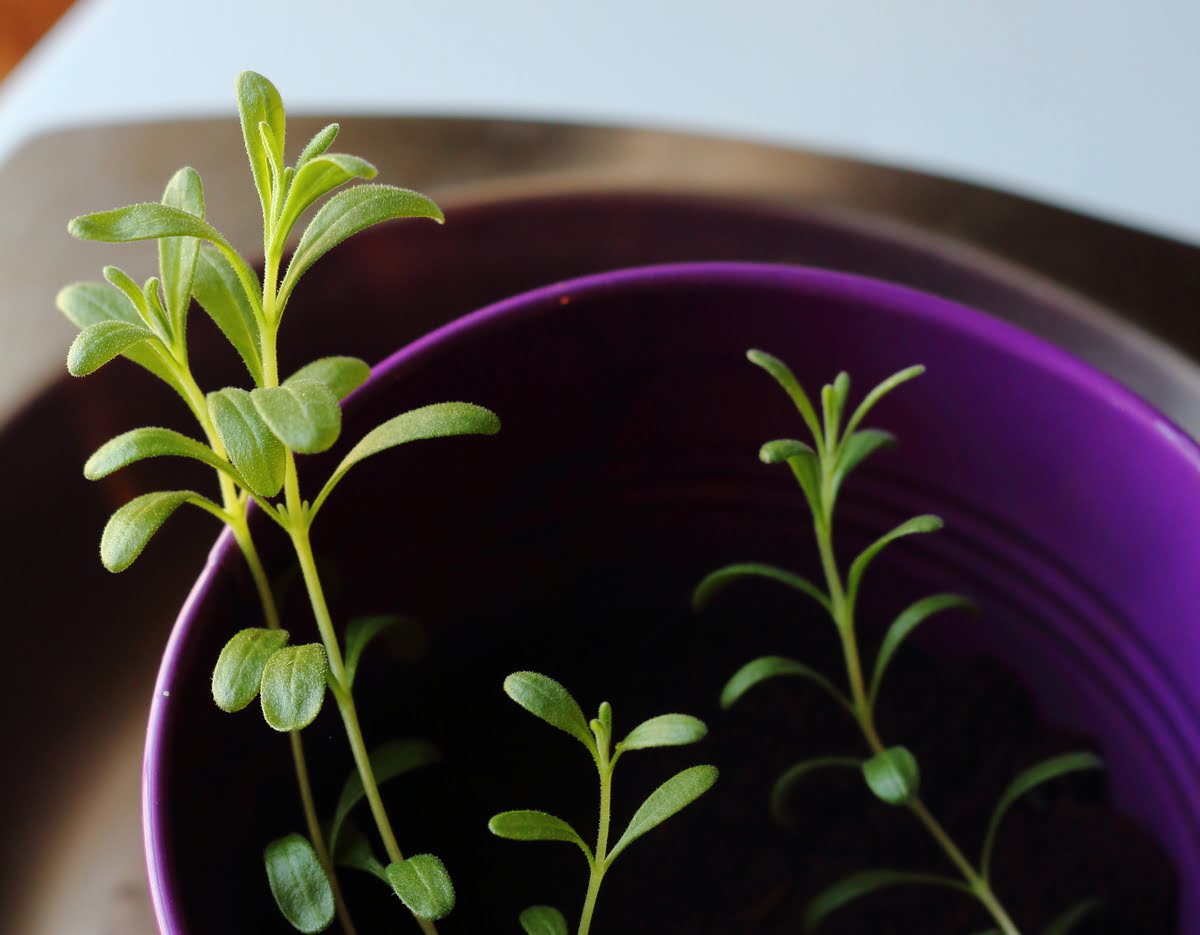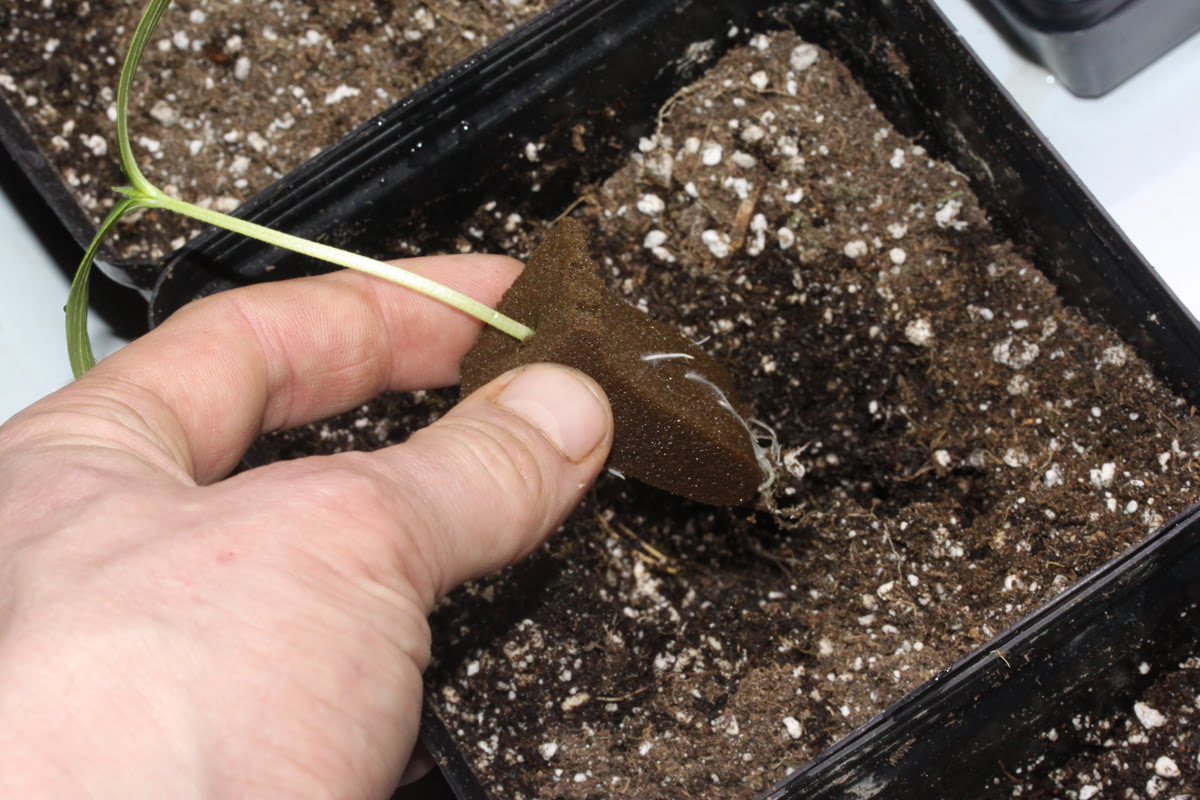Home>Gardening Techniques>Plant Care>When To Transplant Lemon Seedlings
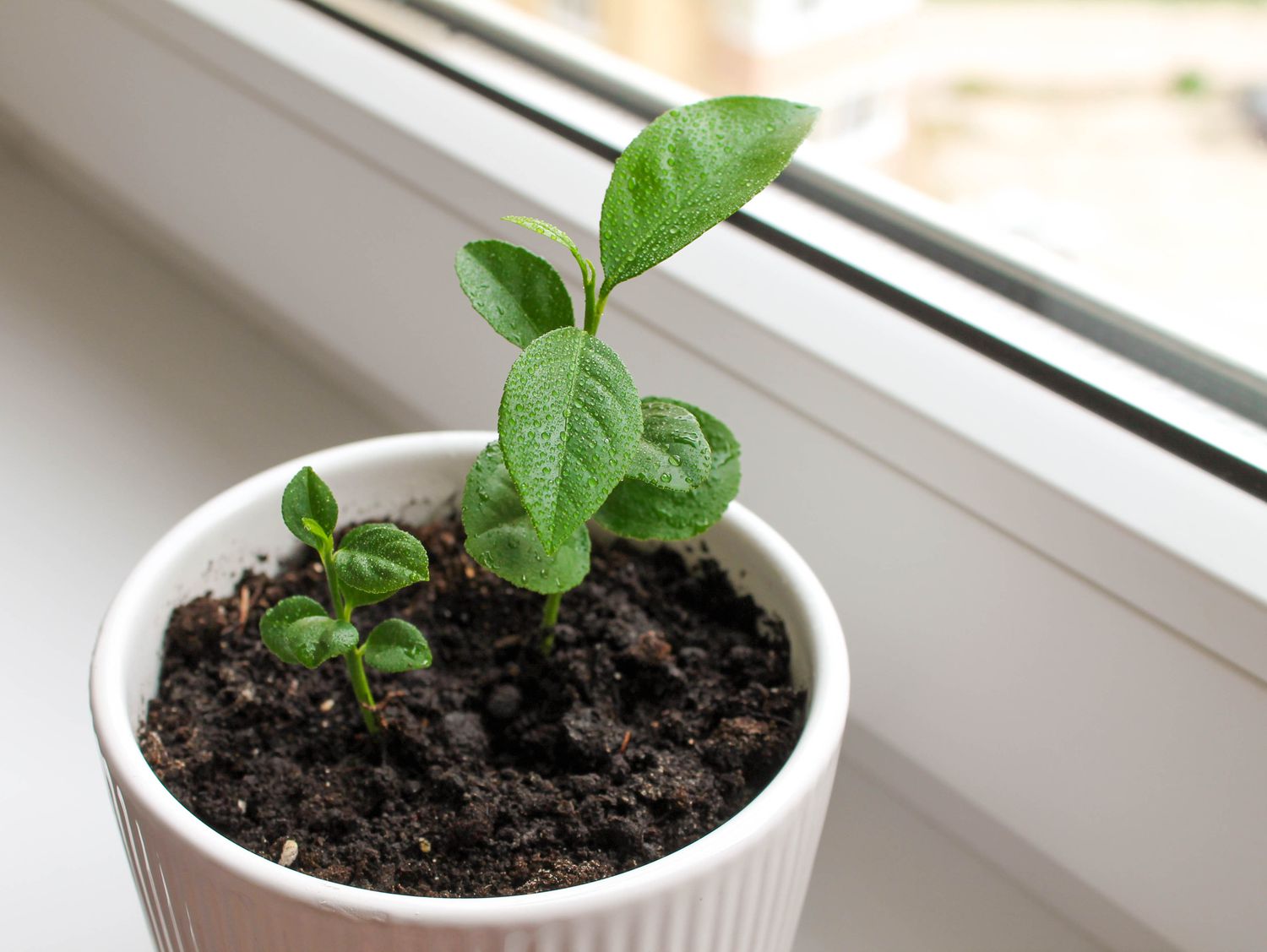

Plant Care
When To Transplant Lemon Seedlings
Modified: February 9, 2024
Learn all about when to transplant lemon seedlings and proper plant care to ensure their healthy growth. Get expert tips and advice from our gardening experts.
(Many of the links in this article redirect to a specific reviewed product. Your purchase of these products through affiliate links helps to generate commission for Chicagolandgardening.com, at no extra cost. Learn more)
Table of Contents
Introduction
Welcome to the wonderful world of plant care! If you’re a plant enthusiast, you’ll know how rewarding it can be to nurture your plants and watch them flourish. One particular plant that brings joy to many gardeners is the lemon tree. Not only does it offer beautiful foliage and fragrant blossoms, but it also provides bountiful fruit.
However, growing lemon trees from seeds requires some patience and care. Once your lemon seedlings have matured and developed a strong root system, it’s time to think about transplanting them. Transplanting is a crucial step in ensuring the optimal growth and health of your lemon tree.
In this article, we will delve into the process of transplanting lemon seedlings and provide you with helpful tips and guidelines to ensure successful transplantation. We’ll discuss the appropriate time for transplanting, preparing the seedlings, choosing the right location, the techniques involved in transplanting, and caring for the transplanted seedlings.
So, whether you’re a seasoned gardener or a beginner, join us as we unravel the secrets to successfully transplanting your lemon seedlings and watch your lemon tree thrive!
Importance of Transplanting Lemon Seedlings
Transplanting lemon seedlings is a critical step in their growth journey. It allows the young plants to establish a stronger root system and provides them with the space and nutrients they need to thrive. Here are a few key reasons why transplanting is so important:
- Enhanced Growth: Transplanting lemon seedlings into larger containers or outdoor garden beds gives their roots more room to spread out and access nutrients. This promotes healthier and faster growth, leading to stronger and more robust plants.
- Improved Nutrient Availability: Lemon seedlings that outgrow their original containers may soon deplete the available nutrients. Transplanting them to larger pots or garden beds allows for fresh soil with ample nutrients to sustain their growth.
- Prevention of Root Bound Conditions: When seedlings remain in small containers for too long, their roots can become cramped and begin to circle around the edges. This can hinder their growth and lead to root-bound conditions, where the roots struggle to absorb water and nutrients effectively. Transplanting ensures that the roots have sufficient space to grow and develop properly.
- Establishment of Stronger Root System: By transplanting lemon seedlings, you encourage the development of a stronger and more extensive root system. A well-developed root system helps the plant anchor itself firmly in the soil, provides stability against wind and other stressors, and improves water and nutrient uptake.
Transplanting your lemon seedlings at the right time is crucial to maximize their chances of survival and successful growth. In the next section, we’ll explore the suitable time for transplanting your lemon seedlings.
Suitable Time for Transplanting
Choosing the right time to transplant your lemon seedlings is essential for their successful establishment and growth. Timing is influenced by several factors, including the age of the seedlings, local climate, and the overall health of the plants. Here are some guidelines to help you determine the suitable time for transplanting your lemon seedlings:
- Seedling Age: Typically, it is recommended to wait until your lemon seedlings have reached a height of 6 to 8 inches before considering transplantation. At this stage, they have developed a strong root system, making it easier for them to adapt to the new environment.
- Local Climate: The climate in your region plays a significant role in determining the ideal time for transplanting lemon seedlings. It is generally recommended to wait until the threat of frost has passed and the temperatures are consistently above 50°F (10°C) both day and night. Transplanting during milder seasons, such as spring or early fall, when the soil is warm and moisture levels are stable, can give your seedlings the best chance of success.
- Plant Health: It is crucial to ensure your lemon seedlings are in good health before transplanting them. Look for vibrant green leaves, strong stems, and healthy roots. If you notice any signs of disease, pest infestation, or nutrient deficiencies, it is best to address those issues before moving the seedlings.
By carefully considering the age of your seedlings, the climate conditions, and the overall health of the plants, you can choose the most suitable time for transplanting your lemon seedlings. In the next section, we will discuss how to prepare the seedlings before transplanting them.
Preparing the Seedlings for Transplanting
Proper preparation of your lemon seedlings before transplanting is crucial to ensure their successful transition to a new environment. By following these steps, you can help minimize shock and maximize the chances of survival for your seedlings:
- Watering: Before transplanting, give your lemon seedlings a thorough watering. This helps to hydrate the roots and loosen the soil, making it easier to remove the plants from their containers.
- Gently Loosening the Roots: Carefully remove the seedlings from their existing containers, being mindful of the fragile roots. Lightly loosen the roots with your fingers or a small tool to encourage them to spread out in the new planting location.
- Trimming: If the seedlings have excessively long or damaged roots, consider trimming them slightly to encourage new root growth. Be cautious not to remove too much, as this can stress the plant.
- Pruning: Inspect the seedlings for any damaged or diseased leaves, stems, or branches. Prune off any affected parts using clean and sharp pruning shears. This promotes healthy growth and prevents the spread of diseases.
- Transplanting Medium: Prepare a well-draining transplanting medium for your lemon seedlings. A mix of potting soil, compost, and perlite or vermiculite is often recommended. This combination provides adequate airflow and moisture retention for the roots.
- Transplanting Containers: Choose appropriately sized containers or garden beds for transplanting your seedlings. The containers should have drainage holes to prevent waterlogged soil, which can lead to root rot and other problems.
By taking the time to prepare your seedlings for transplanting, you can minimize stress and ensure a smooth transition to their new environment. In the next section, we will discuss the importance of choosing the right location for your transplanted lemon seedlings.
Choosing the Right Location
Choosing the right location for your transplanted lemon seedlings is essential for their growth and productivity. Here are some key factors to consider when selecting the perfect spot:
- Sunlight: Lemon trees thrive in full sunlight, so it’s crucial to choose a location that receives at least six to eight hours of direct sunlight each day. A sunny spot ensures optimal growth, fruit production, and overall health of the tree.
- Soil Drainage: Lemon trees prefer well-draining soil to prevent waterlogged roots. Avoid areas with heavy clay soil that retains excessive moisture and consider amending the soil with organic matter or using raised beds to improve drainage if needed.
- Air Circulation: Good air circulation around the lemon tree helps prevent fungal diseases and encourages healthy leaf and fruit development. Select a location that is not surrounded by tall structures or other trees that could hinder airflow.
- Space: Consider the mature size of the lemon tree when choosing the location. Allow enough space for the tree to grow and spread its branches without being overcrowded. Adequate space also ensures easy access for maintenance tasks such as pruning and harvesting.
- Protection from Extreme Conditions: While lemon trees are fairly hardy, they can still suffer from extreme temperatures and strong winds. Choose a location that provides some protection from harsh weather conditions, such as placing the tree near a wall or fence for windbreak or shading it from intense afternoon sun.
By carefully considering these factors, you can provide your transplanted lemon seedlings with the ideal environment to thrive. In the next section, we will discuss the techniques involved in transplanting your lemon seedlings.
Transplanting Techniques
Transplanting lemon seedlings may seem like a daunting task, but with the right techniques, it can be a smooth and successful process. Here are some steps to follow when transplanting your lemon seedlings:
- Prepare the Planting Hole: Dig a hole in the chosen location that is slightly larger and deeper than the root ball of the seedling. This allows enough space for the roots to spread out comfortably.
- Place the Seedling: Carefully place the lemon seedling in the hole, ensuring that the top of the root ball is level with or slightly above the ground surface. Adjust the depth if necessary, keeping in mind that planting too deep can lead to rotting of the trunk, while planting too shallow can expose the roots.
- Backfill and Firm the Soil: Fill the hole with the prepared transplanting medium, gently pressing it around the root ball to eliminate any air pockets. Ensure the soil is firmly packed, but avoid compacting it too tightly, as this can hinder root growth.
- Water Thoroughly: After planting, give the transplanted seedling a deep watering to help settle the soil and ensure good root-to-soil contact. This promotes the establishment of the transplanted seedling.
- Mulch: Apply a layer of organic mulch around the base of the seedling, leaving a small gap around the trunk to prevent moisture buildup. Mulching helps retain soil moisture, suppresses weed growth, and regulates soil temperature.
- Stake if necessary: If your lemon seedling is tall or has weak branches, it may require staking for support. Use a sturdy stake and secure the tree with soft ties, being careful not to tie it too tightly, which can damage the branches.
Remember to monitor your transplanted lemon seedlings closely in the first few weeks after transplanting. Provide regular watering and ensure proper care to help them establish in their new location. In the next section, we will discuss how to care for your transplanted lemon seedlings.
Caring for Transplanted Lemon Seedlings
After transplanting your lemon seedlings, proper care and attention are crucial to ensure their healthy growth and development. Here are some essential tips for caring for your transplanted lemon seedlings:
- Watering: Provide regular watering to your transplanted lemon seedlings, especially during the first few weeks after transplanting. Keep the soil consistently moist but not waterlogged. Adjust the watering frequency based on the weather conditions and the moisture levels of the soil.
- Fertilizing: Feed your transplanted lemon seedlings with a balanced citrus fertilizer to provide them with essential nutrients. Follow the instructions on the fertilizer packaging for the correct application rate and timing. Avoid over-fertilization, as it can lead to nutrient burn or other negative effects on the plants.
- Pruning: Regularly inspect your transplanted lemon seedlings and prune any dead, damaged, or diseased branches. This helps promote healthy growth and prevents the spread of diseases. Additionally, you can shape the tree by selectively pruning to maintain a desired form or size.
- Pest and Disease Control: Monitor your transplanted lemon seedlings for any signs of pests or diseases. Common pests that affect citrus trees include aphids, scale insects, and citrus leaf miners. If pests or diseases are detected, take appropriate measures such as using organic insecticides or consulting with a local horticulturist for guidance.
- Mulching: Maintain a layer of organic mulch around the base of your lemon seedlings. This helps regulate soil temperature, conserve moisture, and suppress weed growth. Keep the mulch a few inches away from the trunk to prevent rotting and pest issues.
- Winter Protection: If you live in an area with cold winters, consider protecting your lemon seedlings from frost and freezing temperatures. Cover the plants with a frost cloth or move potted seedlings indoors during the coldest months. Protecting the seedlings from extreme cold will help them survive and thrive.
By providing proper care, you can ensure the long-term health and productivity of your transplanted lemon seedlings. Stay vigilant and address any issues promptly to maintain the vitality of your lemon tree. In the next section, we will discuss some common issues that may arise during the transplanting process and how to troubleshoot them.
Troubleshooting Common Transplanting Issues
Transplanting lemon seedlings can sometimes come with challenges. Here are some common issues that may arise during the transplanting process and how to troubleshoot them:
- Transplant Shock: Transplant shock is common and can result in wilting, leaf drop, or stunted growth. To help your seedlings recover from transplant shock, ensure they receive adequate water, provide shade or protection from direct sunlight, and avoid over-fertilizing.
- Root Rot: Excessive moisture in poorly draining soil can lead to root rot, causing yellowing leaves and wilting. To prevent root rot, ensure proper drainage by amending the soil or using raised beds. Avoid over-watering and provide good airflow around the root zone.
- Nutrient Deficiencies: Transplanted lemon seedlings may experience nutrient deficiencies if the soil lacks essential nutrients. Monitor the leaves for any signs of yellowing, stunted growth, or leaf discoloration. Address nutrient deficiencies by fertilizing with a citrus-specific fertilizer or incorporating organic matter into the soil.
- Pest and Disease Infestation: Transplanted lemon seedlings may be more susceptible to pest infestations or diseases. Keep a close eye on your plants for signs of pests, such as aphids or scale insects, and take appropriate measures to control them. If disease symptoms appear, consult a local horticulturist for proper diagnosis and treatment options.
- Overcrowding: If you’ve planted multiple lemon seedlings in a compact area, overcrowding can occur. This can lead to competition for nutrients, restricted growth, and increased risk of disease. If overcrowding is evident, consider transplanting some seedlings to a different location to provide adequate space for each plant to thrive.
- Improper Transplanting Depth: Transplanting the seedlings too deep or too shallow can negatively impact their growth. If you notice that the seedling is planted incorrectly, carefully lift and adjust its position, ensuring that the top of the root ball is level with or slightly above the ground surface.
When troubleshooting transplanting issues, it’s important to be observant and take prompt action to address any problems. With proper care and attention, your transplanted lemon seedlings will overcome these challenges and continue to grow into healthy and fruitful trees. In the final section, we will summarize the key points and highlight the importance of proper transplanting for the success of your lemon seedlings.
Conclusion
Transplanting lemon seedlings is a critical step in their growth journey, allowing them to establish a stronger root system and provide the space they need to thrive. By understanding the importance of transplanting, choosing the right time, preparing the seedlings properly, selecting the right location, using the correct transplanting techniques, and providing proper care, you can set your transplanted lemon seedlings up for success.
Remember to consider the age of the seedlings, local climate conditions, and the overall health of the plants when determining the suitable time for transplanting. Take the necessary steps to prepare the seedlings, including watering, gently loosening the roots, trimming if needed, and using an appropriate transplanting medium.
Choosing the right location is crucial for the growth and productivity of your lemon seedlings. Ensure they receive ample sunlight, have well-draining soil, good air circulation, enough space to grow, and protection from extreme conditions.
When transplanting, follow proper techniques such as preparing the planting hole, placing the seedling at the right level, backfilling and firming the soil, watering thoroughly, and providing support if necessary.
After transplanting, proper care is essential. This includes watering consistently, fertilizing appropriately, pruning, managing pests and diseases, mulching, and protecting the seedlings during winter months.
If issues arise during the transplanting process, troubleshoot them by addressing transplant shock, preventing root rot, addressing nutrient deficiencies, controlling pests and diseases, managing overcrowding, and adjusting transplanting depth if necessary.
By following these guidelines, you can ensure the successful transplantation of your lemon seedlings and set them on a path to thrive, providing you with beautiful foliage, fragrant blossoms, and bountiful fruit for years to come.

